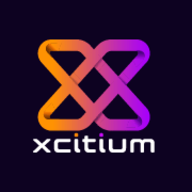

Find out what your peers are saying about CrowdStrike, SentinelOne, Microsoft and others in Endpoint Detection and Response (EDR).


Open EDR is a robust solution for real-time threat detection, monitoring, and response. Known for its effective identification of security breaches, it offers valuable insights for endpoint protection.
Open EDR provides comprehensive security coverage by ensuring endpoint protection across multiple devices. Its key strengths lie in automated response features and seamless integration with existing IT infrastructure. Users value its ability to deliver centralized visibility into network activities, customizable alerts, and detailed forensic analysis. Despite its powerful capabilities, some users report occasional system crashes and note that the setup process can be complex. Improvements in customer support, documentation, and resource management could enhance its overall performance.
What are the key features of Open EDR?Open EDR is highly valued in industries requiring stringent security measures, such as financial services and healthcare. Its comprehensive endpoint protection and automated response capabilities ensure critical assets remain secure, meeting the unique demands of these sectors.
Trend Vision One Endpoint Security delivers comprehensive antivirus, data protection, and device management. It offers robust threat detection and is deployable on-premises or via the cloud, making it versatile for endpoint security across organizations.
Emphasizing reliable endpoint security, Trend Vision One guards workstations and servers with extended detection and response features. Its machine learning-driven threat detection offers protection from malware and viruses, including zero-day threats. With seamless updates and automation, it minimizes administrative burdens, making deployment efficient. Criticisms include high resource use during scans and integration complexities, with calls for improved data loss prevention and better encryption. Users see the need for enhanced Linux support and quicker security updates.
What features define Trend Vision One Endpoint Security?In the finance sector, Trend Vision One is implemented for robust data protection and regulatory compliance. Healthcare providers rely on it for protecting sensitive patient information from cyber threats. Retailers use it for safeguarding payment systems and customer data against breaches, ensuring uninterrupted business operations.
We monitor all Endpoint Detection and Response (EDR) reviews to prevent fraudulent reviews and keep review quality high. We do not post reviews by company employees or direct competitors. We validate each review for authenticity via cross-reference with LinkedIn, and personal follow-up with the reviewer when necessary.